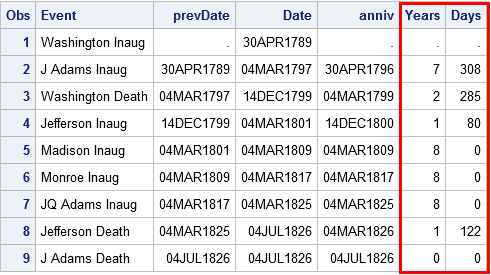Unlike the floorz function the floor function fuzzes the result.
Sas 9 3 floor function.
Neither dissatisfied or satisfied or neutral.
How satisfied are you with sas documentation overall.
If the argument is within 1e 12 of an integer the floor function fuzzes the result to be equal to that integer.
Multiply the result by 100 to restore the scale of the original number.
If the value of argument is positive the int function has the same result as the floor function.
If the value of argument is negative the int function has the same result as the ceil function.
Please choose a rating.
Therefore with the floorz function you might get unexpected results.
Thank you for your feedback.
If the argument is within 1e 12 of an integer the floor function fuzzes the result to be equal to that integer.
The floorz function does not fuzz the result.
If the argument s value is within 1e 12 of an integer the function results in that integer.
Unlike the floorz function the floor function fuzzes the result.
Reference tell us how satisfied are you with sas documentation.
The floor function rounds down.
The ceil function rounds up.
The floorz function does not fuzz the result.
The floorz function uses zero fuzzing.
If the argument is within 1e 12 of an integer the floor function fuzzes the result to be equal to that integer.
The floor function fuzzes the results so that if the results are within 1e 12 of an integer the floor function returns that integer.
Therefore with the floorz function you might get unexpected results.
The round function rounds to the nearest integer.
Round down to nearest 100.
Use the floor function to round down the ratio to the nearest integer 3.
The functions that perform rounding are the same in the data step as in the sas iml language.
The int function rounds towards zero.
The floorz function does not fuzz the result.
Sas r 9 3 functions and call routines.
If x is your number the sas statement looks like this y 100 floor x 100.

